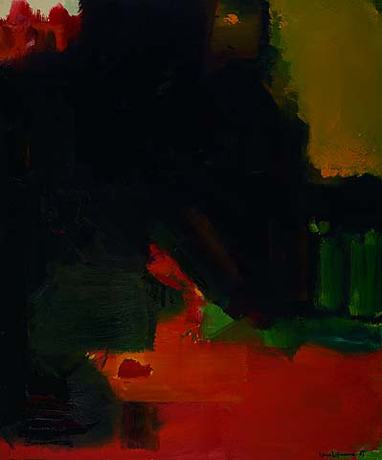Hans Hofmann

Nocturnal Splendor, 1963
72 1/4 x 60 1/8 inches
Oil on canvas
Berkley Art Museum, University of California
Hans Hofmann . . . combined hard-edge, oblong forms with reckless, loosely brushed areas. He created a visual tension between impulsive gestural areas and floating geometric forms. Rectangles seem to advance and recede against the ground, inducing a dynamic back and forth in space that epitomizes Hofmann's "push-pull." In a way, Hofmann produced a synthesis of Fauvism and Cubism. Or, in terms of the younger generation of American artists, a synthesis of the gestural painting of Willem de Kooning, Jackson Pollock, and Franz Kline, and the color-field painting of Clyfford Still, Mark Rothko, and Barnett Newman
. . . Peter Seltz